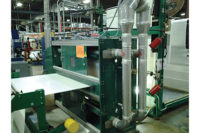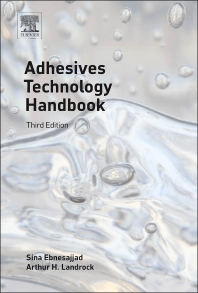Strategic Solutions: Adhesives vs. Coatings

Coatings and adhesives have a lot in common. Unfortunately, it seems to be a fact of life that adhesives formulators rarely read coatings literature, and coatings formulators rarely read adhesives literature. What is a coating, however, but an adhesive that must “stick like glue” to a single surface, and that could bond two surfaces together under certain conditions? (For a practical example, paint the door and the frame of an entrance to your home with latex paint, avoid opening or closing the door for a few months, and then try to open it. If it’s a tight fit, and the paint on the door touches the paint on the frame, you are going to fight a losing battle trying to pry them apart.)
Despite chemical and functional similarities, however, cross-fertilization of the chemistry of adhesives and coatings rarely takes place, except at the raw material supplier level. A sharp vendor occasionally suggests that a paint formulator might try an “adhesive” resin or suggests to an adhesive formulator that he try a “coatings” resin. Even at that level, though, products tend to be labeled, segregated and advertised by end-market use.
Cross-Functional Polymers
The 820-page U.S. Paint and Coatings Industry Market Analysis, 2010-2015 is published on a biennial basis by the American Coatings Association. The report serves as a type of industry bible for not only marketing information on the 21 major segments (and 80-odd sub-segments) of the U.S. coatings industry, but also for technical information, especially with regard to the types of polymers and resins used in different coating applications, and the reasons why they are used.
These polymers and resins, as well as many of the additives and other modifiers used in combination with them, are generically the same as those used in adhesives. Acrylics, polyurethanes, epoxies, and latexes such as polyvinyl acetate (PVA) and vinyl acetate ethylene (VAE) are common to both coatings and adhesives. A working knowledge of the properties that they impart to coatings should be very valuable to an adhesives formulator, and vice versa.
Many types of polymers are used in the U.S. industrial maintenance market (sometimes referred to as the protective coatings market, especially in Europe). These polymers produce coatings products that protect a variety of substrates (principally steel, but also other metals, as well as concrete and other materials) from corrosion, abrasion, thermal, chemical, fungal, and ultraviolet light degradation in a variety of interior and exterior applications in aggressive atmospheres.
Many of these polymers are familiar to the adhesives and/or sealants formulator, and some might have properties that, if used correctly, would enhance an adhesive or sealant’s overall performance. Several years ago, a coating with remarkable properties was introduced into one segment of the coatings market, and—try as they might—the inventing company’s competitors could not replicate the performance of the product. The secret? The inventors were thinking outside of the box, had read the adhesive literature, and incorporated a polymer normally used exclusively in adhesives into its coating. The result was a unique product that could not be matched, no matter how hard the competition tried, because they were not able to think out of the box—and because they were clearly not familiar with the adhesives literature.
Thinking Outside of the Box
As a result of the slowly recovering economy, both the coatings and adhesives industries are on the mend, but both are still spending too much of their precious technical and R&D resources seeking alternative sources of raw materials and/or less expensive raw materials. Certain amounts of both activities are necessary and healthy, but more time needs to be spent thinking outside of the box to create the products and platform technologies that will assure the coatings and adhesives producers that they have what their customers need—before their customers even realize they need it. If manufacturers wait until customers articulate their needs, it is often too late to fulfill them.
For more information, phone (513) 469-7555 or visit www.chemquest.com.
Looking for a reprint of this article?
From high-res PDFs to custom plaques, order your copy today!







